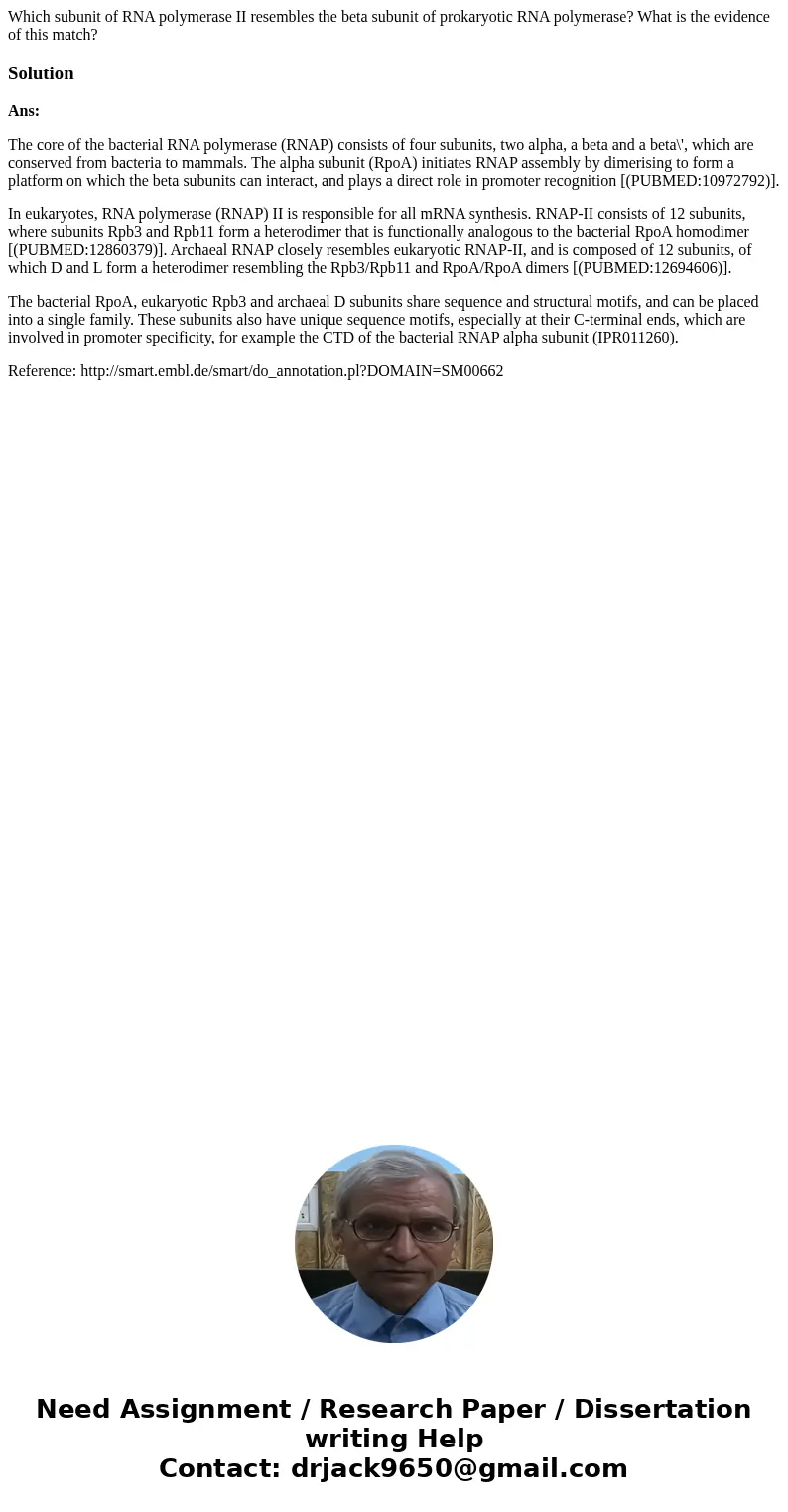Which subunit of RNA polymerase II resembles the beta subuni
Which subunit of RNA polymerase II resembles the beta subunit of prokaryotic RNA polymerase? What is the evidence of this match?
Solution
Ans:
The core of the bacterial RNA polymerase (RNAP) consists of four subunits, two alpha, a beta and a beta\', which are conserved from bacteria to mammals. The alpha subunit (RpoA) initiates RNAP assembly by dimerising to form a platform on which the beta subunits can interact, and plays a direct role in promoter recognition [(PUBMED:10972792)].
In eukaryotes, RNA polymerase (RNAP) II is responsible for all mRNA synthesis. RNAP-II consists of 12 subunits, where subunits Rpb3 and Rpb11 form a heterodimer that is functionally analogous to the bacterial RpoA homodimer [(PUBMED:12860379)]. Archaeal RNAP closely resembles eukaryotic RNAP-II, and is composed of 12 subunits, of which D and L form a heterodimer resembling the Rpb3/Rpb11 and RpoA/RpoA dimers [(PUBMED:12694606)].
The bacterial RpoA, eukaryotic Rpb3 and archaeal D subunits share sequence and structural motifs, and can be placed into a single family. These subunits also have unique sequence motifs, especially at their C-terminal ends, which are involved in promoter specificity, for example the CTD of the bacterial RNAP alpha subunit (IPR011260).
Reference: http://smart.embl.de/smart/do_annotation.pl?DOMAIN=SM00662

 Homework Sourse
Homework Sourse